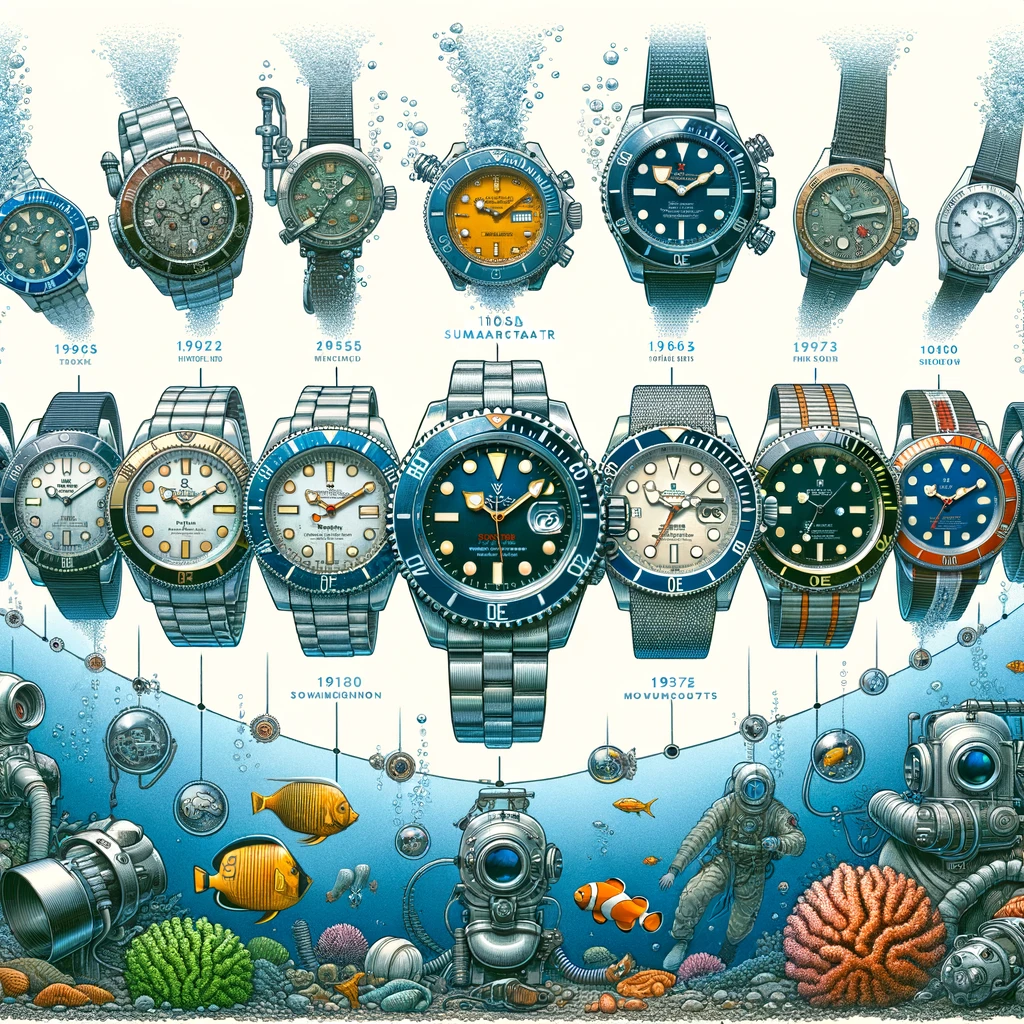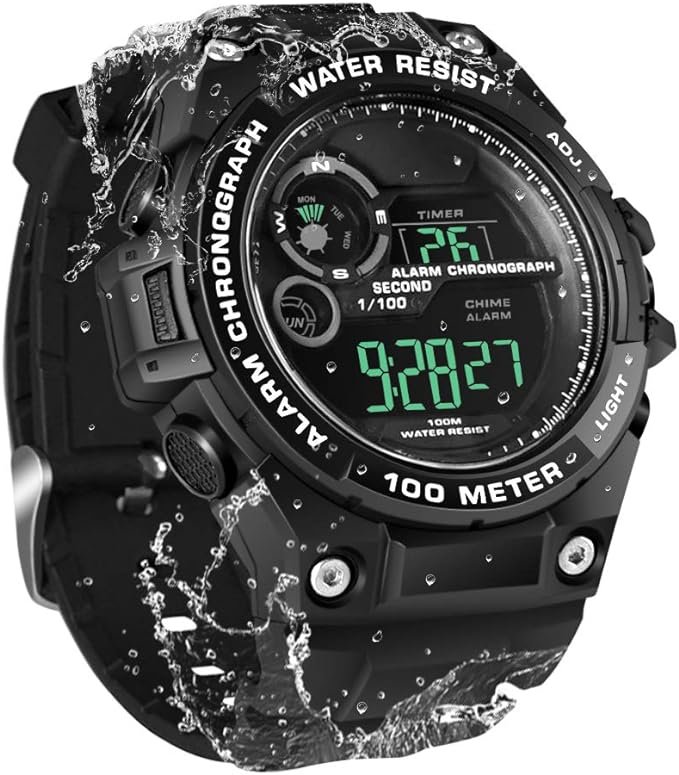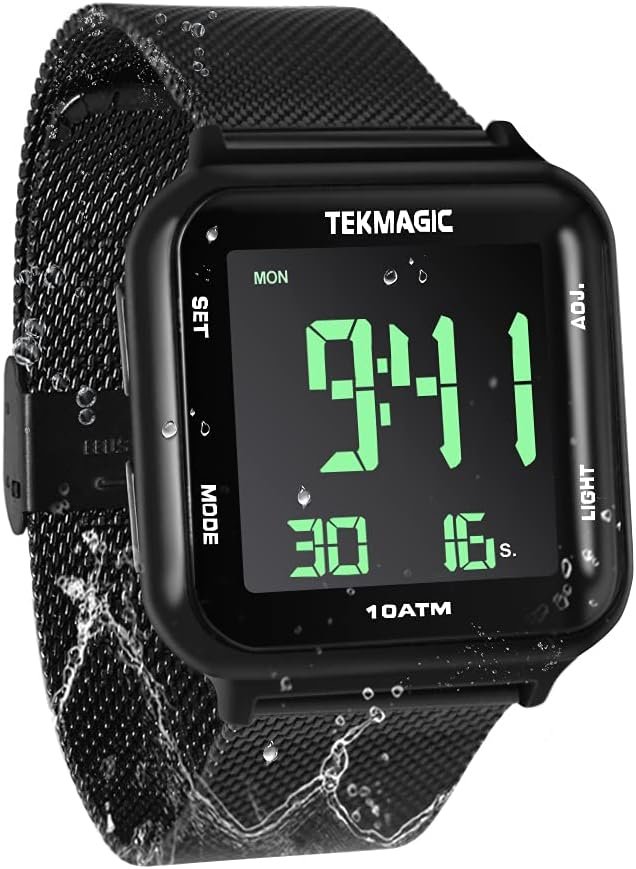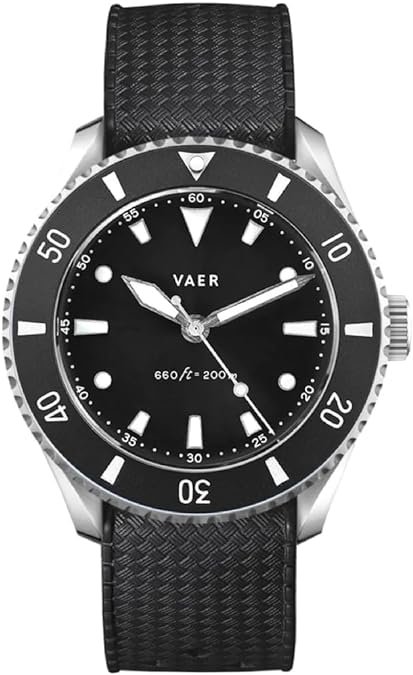The Ultimate Guide to Scuba Diving Watches
Scuba diving watches are more than just timekeepers; they are vital instruments that can ensure the safety and enjoyment of your underwater adventures. Whether you’re a novice diver exploring shallow reefs or a seasoned professional delving into the depths, understanding the features and capabilities of your scuba diving watch is essential. In this article, we’ll dive deep into the world of scuba diving watches, exploring their history, essential features, and how to choose the right one for your aquatic explorations.

A Deep Dive into the History of Scuba Diving Watches
The Origins of Waterproof Timekeeping
The concept of a waterproof watch wasn’t initially designed with scuba diving in mind. Early 20th-century advancements in waterproofing were driven by the need for military personnel and outdoor adventurers to have reliable timepieces in wet conditions. However, it wasn’t long before the potential for underwater timekeeping was recognized.
The 1920s to 1950s: The Pioneering Years
The history of scuba diving watches truly began in the 1920s, with the introduction of watches capable of resisting water ingress to some degree. However, these early models were often rudimentary and not specifically designed for scuba diving. It was in the 1950s, with the advent of scuba diving as a popular recreational activity, that the demand for specialized diving watches really took off. Brands like Rolex and Omega led the charge, introducing models that could withstand the pressures encountered at depths used by recreational divers. Rolex’s Submariner, introduced in 1953, and Omega’s Seamaster, released in 1948 but significantly evolved in the following decades, are notable examples that set the standard for what a diving watch could be.
The 1960s Onwards: Technological Advancements
The 1960s marked a period of rapid technological advancement in the world of scuba diving watches. The development of the dive computer and improvements in materials science allowed for greater depths, longer dive times, and more reliable instruments. Watches began to incorporate features like helium escape valves to cater to the needs of professional divers operating in extreme conditions.
Innovations in Design and Functionality
Over the years, diving watches have seen a plethora of innovations in both design and functionality. Unidirectional rotating bezels, designed to track dive time safely, became a standard feature. The introduction of quartz movements in the 1970s offered an alternative to mechanical movements, providing greater accuracy and requiring less maintenance. Meanwhile, advances in luminescent materials improved dial visibility in the low-light conditions of underwater environments.
Essential Features of Scuba Diving Watches
| Feature | Description |
|---|---|
| Water Resistance | Capable of withstanding pressures at depths of at least 200 meters (660 feet), suitable for deep-sea diving. |
| Unidirectional Rotating Bezel | A bezel that rotates counterclockwise to track dive time safely, preventing accidental adjustment. |
| Luminosity | Equipped with luminous hands, markers, and sometimes bezels for visibility in low light conditions. |
| Durable Materials | Constructed from materials like stainless steel, titanium, and ceramics for strength and corrosion resistance. |
| Helium Escape Valve | Allows helium to escape during decompression in saturation diving to prevent damage to the watch. |
| Accuracy and Reliability | Maintains accuracy and functionality under the extreme conditions of underwater exploration. |
| Strap or Bracelet | Adjustable to fit over a diving suit, made from durable materials like rubber, silicone, or metal. |

Maintenance Tips for Scuba Diving Watches
To ensure that your scuba diving watch remains a reliable companion on your underwater adventures, regular maintenance is essential. Below are detailed tips on how to care for and maintain your scuba diving watch to keep it in optimal condition.
Regular Cleaning
- After Each Dive: Rinse your watch with fresh water after every dive, especially if you’ve been in saltwater. Salt can corrode metal parts and seals if not washed off.
- Use a Soft Brush: Gently clean the case, bezel, and strap with a soft brush to remove any particles or sediment that could scratch the watch or degrade its seals.
- Dry Thoroughly: Ensure the watch is completely dry before storing it. Use a soft, lint-free cloth to prevent moisture buildup, which can lead to corrosion.
Checking Seals and Gaskets
- Annual Inspections: Have the seals and gaskets checked annually by a professional, even if the manufacturer claims they’re designed to last longer. These components are crucial for maintaining water resistance.
- Replacement after Battery Changes: If your watch has a quartz movement and requires battery changes, ensure the seals are checked—and replaced if necessary—each time the battery is changed.
Avoid Chemicals
- Keep It Chemical-Free: Avoid exposing your watch to chemicals, such as cleaning agents, perfumes, or chlorinated water, as they can damage the seals, case, or strap.
- Rinse After Exposure: If your watch does come into contact with chemicals, rinse it with fresh water as soon as possible.
Professional Servicing
- Follow Manufacturer Recommendations: Adhere to the manufacturer’s recommended service intervals. Mechanical watches, in particular, require regular servicing to ensure their complex movements remain accurate and functional.
- Use Authorized Service Centers: Ensure that servicing is done by authorized centers to maintain your warranty and ensure that genuine parts are used.
Mind the Crown and Pushers
- Secure the Crown: Always ensure the crown is properly secured before diving. A partially open crown can allow water to enter the watch.
- Avoid Operation Underwater: Do not operate the crown or pushers while underwater unless your watch is specifically designed for such use.
Storage and Care

- Avoid Extreme Temperatures: Store your watch in a place with a stable temperature. Extreme cold or heat can affect the watch’s functionality and durability.
- Use a Watch Case: When not in use, keep your watch in a case or pouch to protect it from dust and scratches.
Avoid Magnetic Fields
- Keep It Away from Magnets: Exposure to strong magnetic fields can affect the accuracy of your watch’s movement. Keep it away from speakers, refrigerators, and other magnets.
Wear and Tear Monitoring
- Regularly Inspect for Damage: Check your watch for any signs of wear or damage, such as cracked crystals or a damaged strap. Addressing these issues promptly can prevent further damage.
By following these maintenance tips, you can ensure that your scuba diving watch remains a dependable tool for your diving adventures, preserving its functionality and extending its lifespan.
Choose the Right Scuba Diving Watch
Product Name | Rating | Illustrative Image | Checkout on Amazon here |
|---|---|---|---|
Underwater Scuba Diving Watch for Mens Boys with Stopwatch, Chronograph |  | 100m Waterproof Luminous Scuba Diving Watch with Stainless Steel Watch Strap, Support Stopwatch, Alarm Clock and Backlight |  | Vaer DS4 Solar Dive Watch for Men - Ocean Ready 20 ATM, Solar-Powered - Perpetual Time Keeping, Sapphire Crystal, & Extreme Accuracy |  |
FAQs
How often should I rinse my scuba diving watch?
You should rinse your scuba diving watch with fresh water after every dive, especially after diving in saltwater. This helps remove salt, sediment, and any other particles that could corrode or damage the watch.
When should the seals and gaskets of a diving watch be inspected?
The seals and gaskets should be inspected at least once a year by a professional, even if the watch hasn't been used frequently. It's also wise to have them checked every time the battery is replaced, to ensure the watch remains water-resistant.
Can I change the battery of my diving watch myself?
While it's possible to change the battery yourself, it's recommended to have it done by a professional, especially for high-end diving watches. This ensures that the water resistance is maintained and the warranty stays valid. Professionals will also check the seals and gaskets and replace them if necessary.
Why is it important to keep a diving watch away from magnets?
Exposure to strong magnetic fields can affect the movement of your diving watch, leading to inaccuracies in timekeeping. This is why it's crucial to keep it away from magnets and devices that generate strong magnetic fields, like speakers and refrigerators.
What should I do if my diving watch has been exposed to chemicals?
If your watch comes into contact with chemicals, rinse it thoroughly with fresh water as soon as possible. Chemicals can damage the seals, leading to a loss of water resistance, and can also harm the finish of your watch. If you suspect significant exposure, consider having it checked by a professional for any potential damage.



